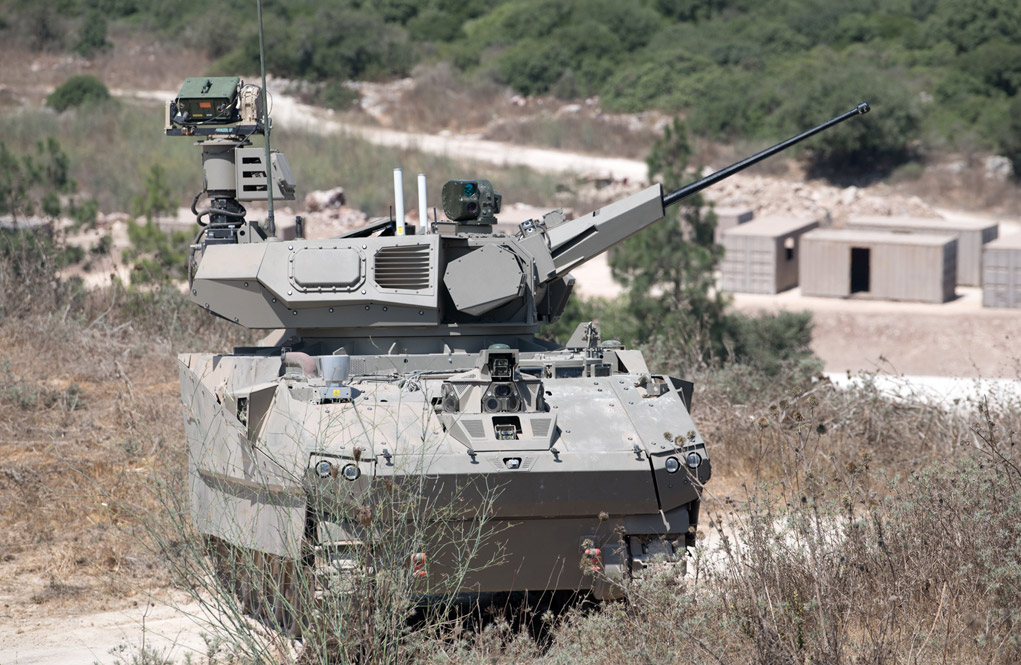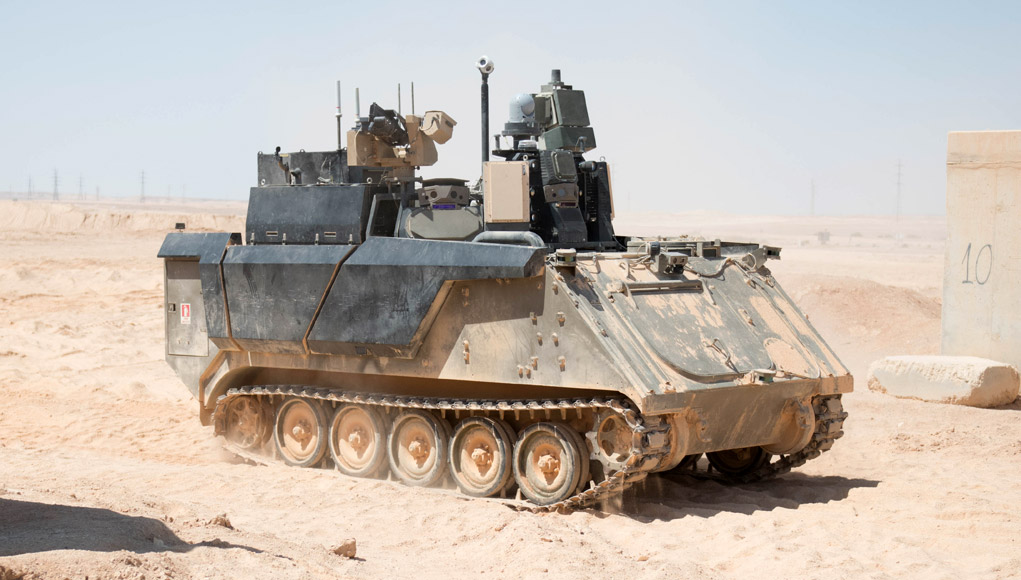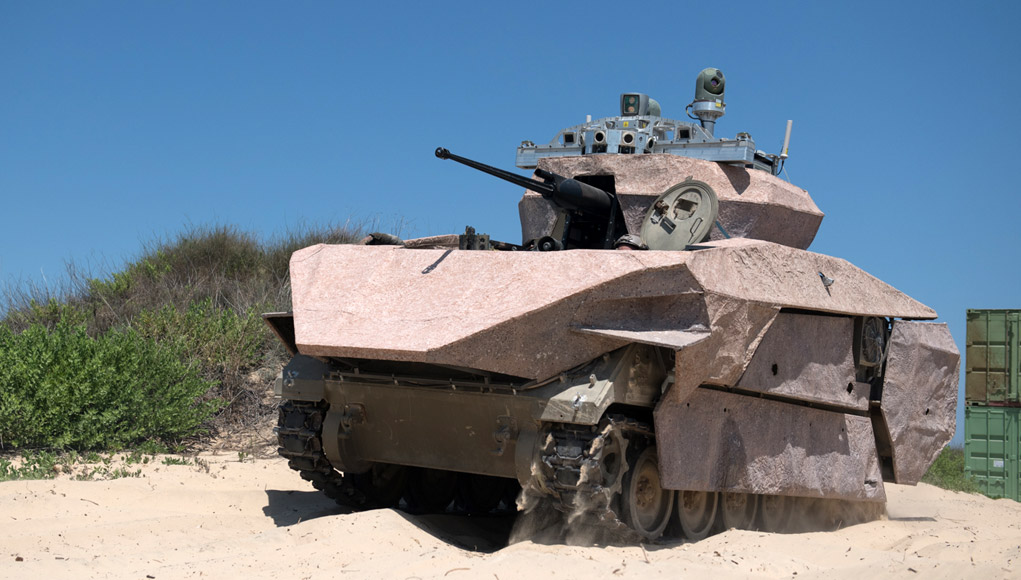Israel’s Ministry of Defense Defense Research and Development Directorate (DR&DD) provided today a glimpse into the Carmel technology demonstration program, evaluating future combat vehicle technologies for the late 2020 and beyond.
DR&DD invited three industry groups to provide technology demonstrators for the program – Rafael, Elbit Systems and IAI. The demonstrators were all based on an M-113 used as a platform surrogate for the combat vehicle. The future platform will utilize a new chassis powered by a diesel generator powering a rechargeable battery bank to provide the electricity for propulsion and all systems.
During the first phase of the Carmel Program, a significant challenge was presented to the three major defense industries in Israel: to prove the feasibility of an AFV that is operated by only two combat soldiers, with closed hatches. The two persons employ different sensors onboard and off-board, including radars, thermal imaging sensors, video cameras, acoustic and lasers and drones, all inputs are fused and displayed to the crew for situational assessment and response.

Subscribe to read the full coverage.

Each group took a different approach to meet the objectives – a light (35 ton) combat vehicle armed with medium caliber auto-cannon and missiles, and operated by a crew of two, with an additional position for a third person operating specialist systems. Designed for manned operation, Carmel is equipped with sensors, artificial intelligence, and advanced automation and system autonomy thus reducing operator workload. This approach enables human operators to take decisions and actions in a timely and optimal manner.The Carmel Program also includes the development of other capabilities not presented in the demo day, such as the platform with hybrid-electric propulsion and energy storage with high capacity to support the electronic systems on board, signature reduction, including active camouflage, multi-task radar providing both self defense (active protection) from anti-tank threats as well as detection and tracking of drones, vehicles and humans, blue force tracking and various types of weapon systems, including direct and indirect fires, self-protection and high-energy lasers. Another aspect to be pursued in a later stage is teamwork – the synergy between several Carmel vehicles, sharing information and tasks using broadband connectivity. ‘Manned-Unmanned Teaming’, will evaluate the advantages of augmenting the small crew with the capabilities of associated robotic team members.
The lessons learned from the recent evaluation will be assessed and presented to the DR&DD for further action. DR&DD is expected to recommend a technology mix for further development and integration in a future platform or select a single provider or a team to act as a prime contractor. Among the technologies already selected for integration in future platforms is the Iron Vision helmet display from Elbit Systems, that will be integrated in the next phase of the Merkava Main Battle Tank – the Merkava Mk4 Barak. Other systems could be included in the future in the Eitan APC and Namer heavy armored infantry combat vehicle.




















